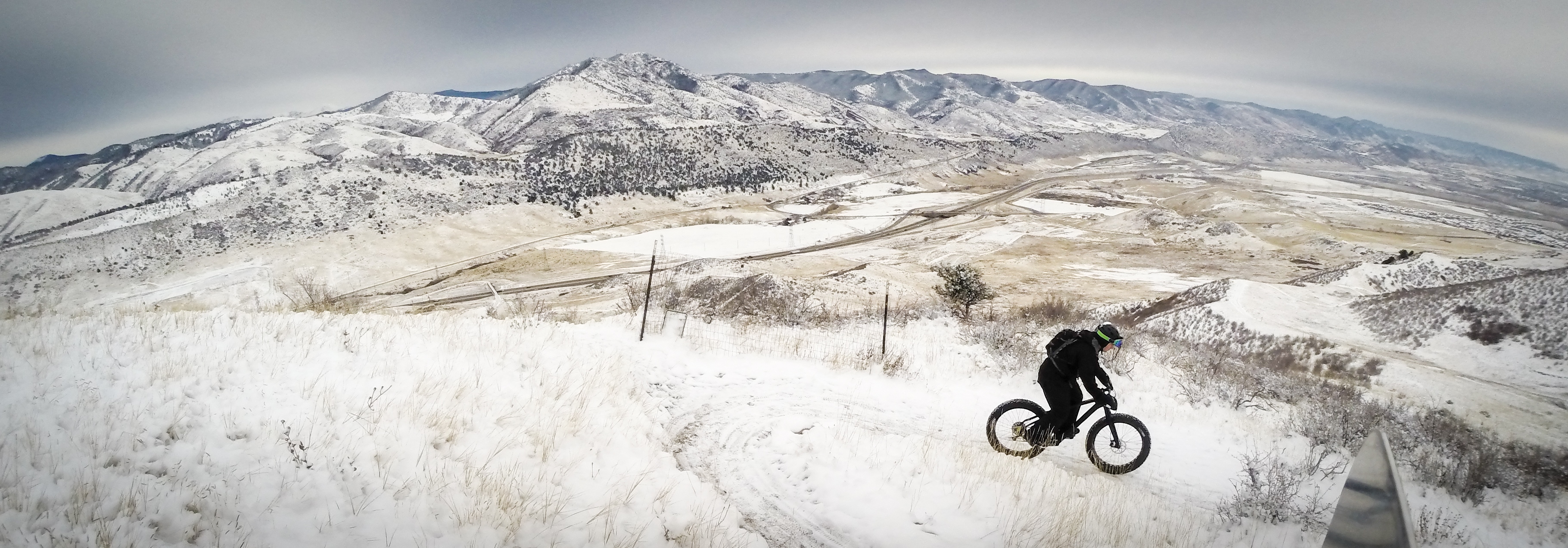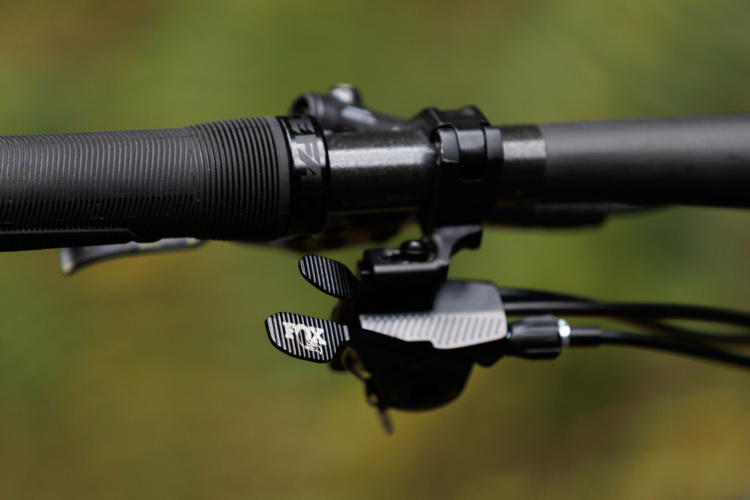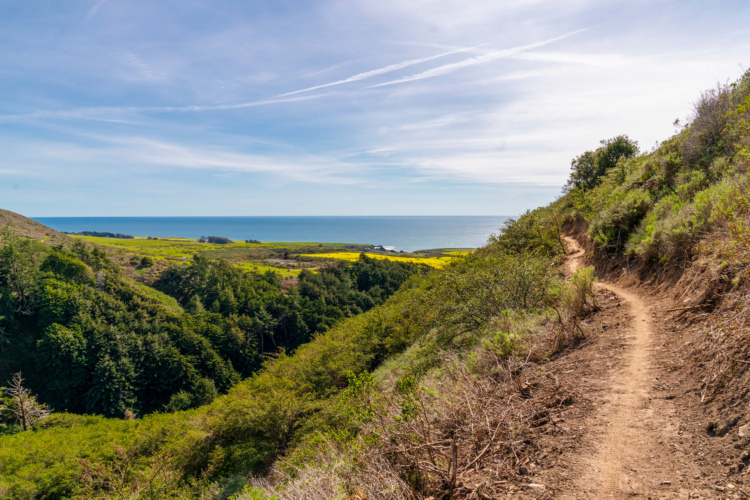
If you haven’t heard of SRAM’s new 1×12 Eagle drivetrain yet, you’ve probably been living in a van, down by the river, with no cell reception. Not that there’s anything wrong with living in a van down by the river and just riding your bike every day, but if you want to catch up on the hubbub, read this article.
I recently had my first chance to ride SRAM Eagle and to form some opinions about this new drivetrain. Read on for my take.
Specs
XX1 Eagle comes stock with the visually-impressive gold-colored 10-50 12-speed cassette. I can guarantee you that you won’t understand how big a 50-tooth cog is until you see one in person–it’s absolutely massive! Seriously, go to your local shop with the blingiest bikes and check it out–it’s astounding.

You can choose which chainring to run up front, like any old 1x system, but the stock is a 32-tooth ring.
SRAM claims to have updated basically all of the internals and mechanical do-dads that make the shifts happen, but at the end of the day (or the beginning, for that matter) the drivetrain works the same as any SRAM 1x drivetrain: you can only press the shifter with your thumb, the derailleur clutch keeps the chain taught, and the narrow-wide chainring help keeps the chain from popping off.
The total weight of the XX1 Eagle drivetrain is a very respectable 1,456g, and total cost is $1,417.
Out on the Trail

I tested the Eagle drivetrain over the course of two days aboard the brand-new Scott Spark Plus in Crested Butte, CO–more on that later. My testing consisted of downhill laps at the bike park and an epic 23-mile backcountry ride on the iconic 403 and 401 trails.
While not a long-term test, in no way did I take it easy on this drivetrain! On day two for our epic backcountry ride we awoke to blankets of gray clouds, with rain beginning to fall minutes into our ride. While the dirt on the trails held up well to the moisture, the moto’ed-out low spots filled with water, making for soupy mud puddles and a constant coating of grit, muck, and general nastiness.
Through every situation that I piloted the Eagle, it shifted superbly! The shifts were some of the crispest, most reliable I’ve ever felt from any drivetrain, period. There was no ghost shifting, no searching for gears, and almost no complaining whatsoever.
At one point, I did get the drivetrain to squawk at me: when accelerating out of the saddle, up out of a mud hole, on a stupid-steep hill, and attempting to downshift three gears at once. Ultimately it was a bad call on my part, and while the drivetrain crackled and groaned under pressure and from grit in the gears, it made the shift successfully, allowing me to complete the slippery climb instead of having to get off and push.
Gear Range
Speaking of getting off and pushing, the first question that came to my mind when I start pedaling Eagle was, “how will the 50-tooth cog feel on the climb?” And the honest-to-goodness answer?
SRAM’s video about the death of the front derailleur isn’t hype.
It really isn’t.
With a 32-50 low gear, when I did end up getting off to push, I had to be honest with myself: it wasn’t the gearing range. It was the fact that I need to be in better shape.
While perhaps my 2×10 drivetrain might have a bit lower gear than the Eagle drivetrain I was riding, a 32-50 low gear should be plenty low for almost any climb known to man. And if it isn’t low enough for you? Drop to a 30-tooth cog, or even a 28. You can achieve an absolutely insane low end, without the added complication, weight, and reduction in chain retention that all come from a 2x drivetrain.
On the high end, Eagle provides a high gear equivalent to a standard 1×11 drivetrain. However, if you find that you’re having issues with getting spun out on the high end or that you ride flatter trails and a 32-50 is basically never usable on your local terrain, you can easily bump the front chainring up to a 34 or a 36, which will then provide a high end speed that’s much higher than a 1×11, but a low-end that’s comparable to what a 32-42 will provide.
What about that low-hanging derailleur?

Some internet commenters have mentioned that the long-hanging derailleur could get ripped off easily. And while it does appear to hang low, even on black diamond backcountry trails and full-on DH runs at the ski resort, I had absolutely no issues with catching the derailleur on rocks or any other sort of trail obstacle.
In my opinion, anyone voicing this as a charge against Eagle A) hasn’t ridden this drivetrain yet, and B) has conveniently forgotten how long derailleur cages for 3x drivetrains used to be.
Would I buy it?
When 1×11 hit the scene, it was rightfully lauded as an excellent advancement. However, I always found 1×11 to require a cost/benefit analysis: should I trade some of my gear range for better shifting and chain retention, or focus on a broader low end and high end range?
With Eagle, you don’t need to make a gear range sacrifice to get an excellent chain retention and drivetrain performance benefit: you can get it all in one package! But right now, that package isn’t cheap. So the question is, “would I buy it?”
Honestly, I can’t see myself upgrading the drivetrain on any of my bikes anytime soon. The reality is that my drivetrains do a pretty great job the way they are, and I can’t really justify a $1,400 upgrade to fix a problem that is barely there. I’m waiting for Eagle to come down in price.
But as I consider my next bike purchase(s) a year or more down the road, would I buy a new mountain bike that doesn’t have a 12-speed drivetrain? And the answer to that, friends, is “probably not.”
After my time on Eagle, I can agree with SRAM’s assertion that 1×12 is the future, and that the marketing isn’t hype. If my next bike has more than one speed on it, it will need to be a 1×12.





















14 Comments
Aug 12, 2016
Aug 11, 2016
Sep 17, 2016
Aug 12, 2016
Sep 17, 2016
Aug 11, 2016
Also, that exact bike has made its way onto my short list of "next bikes." Looking forward to hearing your thoughts on it...
Sep 17, 2016
Apr 18, 2017
Aug 12, 2016
Aug 11, 2016
Apr 18, 2017
Aug 11, 2016
Dec 11, 2016
As I might be in Santos one day, and doing 1,500' 10-20% grade climbs in Va the next. (What I'm doing this morning) the huge range is a necessity. And not hitting the front shifter when going for the dropper post,,,, priceless.
Apr 18, 2017